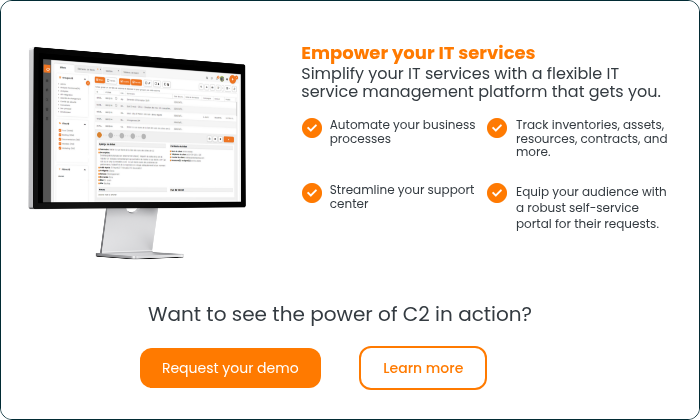7 Technologies You Need to Build a Smart City
To manage smart cities through these three layers individually and together, city managers need various technologies. Here are seven technologies we think every city planner looking to transform their civil operations will want to consider.
1. Internet of Things (IoT)
The Internet of Things (IoT) is an infrastructure embedded with sensing and communication technology. For example, in smart cities, IoT devices could include temperature sensors in subway stations, traffic sensors on roadways, and emissions monitors on city cars and buses. IoT devices collect information and can adjust their environments based on that data or according to directions from human operators.
2. Artificial Intelligence (AI)
City operations contain many moving parts, which would be an understatement. That is where AI management systems come in. Artificial intelligence can help with the analysis and decision-making needed to manage the hectic day-to-day operations of the world’s busiest cities.
AI smart software agents are excellent for many preventative maintenance use cases. They can monitor different metrics for anomalies and act faster than a human operator ever could. For example, an AI agent could monitor water pressure levels through various systems and identify a leak in city pipes before it causes damage.
3. Geospatial Technology
Geospatial technologies cover a broad range of remote monitoring and sensing equipment. Geospatial systems generally map and monitor the weather and the local ecosystem and measure changes that might impact a city and its citizens. Specific technologies can include global positioning satellites (GPS), cameras and remote sensing equipment, and geographic information systems (GIS)—a suite of software tools used to map and analyze your local environment.
Geospatial technologies help you detect problems in your local ecosystem and can provide early warnings for natural disasters like floods, tornados, or wildfires. Data collected from geospatial systems can also inform how you manage your city’s power plants, water utilities, and public transit networks.
4. Cloud Computing
You need someplace to store all the data your smart city collects. Unfortunately, on-premises data storage is no longer cost-effective for many organizations, including cities that might be contending with tight IT budgets. Instead, smart city planners should leverage the low-cost storage options available through cloud computing services.
5. Analytics
Smart cities have data coming in at high velocity. If your analytics take too long to process, you will not generate meaningful insights. Along with cloud storage, city planners need to use the latest big data analytics tools to keep up with the volume and velocity of their smart city data acquisition.
6. Mobile Devices
They may sound unimportant in the grand scheme of all these other technologies, but smartphones and other mobile devices play a huge role in smart cities. Smartphones act as mobile sensing and communications devices that citizens and city workers can carry into hard-to-reach locations not otherwise accessible to IoT or other sensing equipment. They can generate steady streams of information about traffic flow through a city and deliver context-sensitive information back to users.
7. ITSM/ESM Services
Smart cities run on data. That data needs to be collected and analyzed on a central platform. One emerging type of central coordination is enterprise service management (ESM). ESM software like C2 takes the principles of service management that originated in information technology and applies them to other business and civic service-focused operations—notably a city’s public service agencies.
For example, you can use ESM software to manage service requests of your parks department, non-emergency police and fire services, and even special project requests. The service management process is compelling because it works for internal and external requests. You can just as easily use ESM software to manage a citizen's request as you could a coworker from another city agency.
What are the benefits of implementing smart city technologies?
Smart city technologies integrate information and communication technology (ICT) with urban infrastructure to enhance citizens' overall efficiency, sustainability, and quality of life. Here are some specific benefits:
Improved Infrastructure Efficiency
Smart city technologies enable better management and optimization of infrastructure systems such as traffic lights, public transportation, energy distribution, and waste management. This leads to reduced energy consumption, optimized traffic flow, and more efficient resource use.
Enhanced public safety
Implementation of smart surveillance systems, emergency response networks, and predictive analytics helps improve public safety. Cities can respond to incidents more effectively, identify potential risks, and deploy resources efficiently.
Resilience and disaster management
Smart city technologies enhance a city's resilience by improving disaster preparedness and response capabilities. Real-time monitoring and data analysis enable quicker responses to emergencies and natural disasters.
Sustainable environmental practices
Smart city solutions contribute to environmental sustainability by monitoring and managing energy consumption, waste production, and emissions. This reduces environmental impact and helps combat climate change.
Increased quality of life for citizens
Smart city technologies can improve residents' overall quality of life by providing better access to public services, healthcare, and education. Smart applications can also facilitate civic engagement and participation.
Support for economic growth and innovation
Though the initial investment in smart city infrastructure may be significant, the long-term benefits include cost savings through optimized resource utilization, reduced maintenance expenses, and streamlined city operations. This attracts more businesses and investment by fostering an environment that encourages innovation and entrepreneurship. Advanced technology infrastructure and services can create new economic opportunities and job markets.
It's important to note that successful implementation requires careful planning, collaboration among stakeholders, data privacy and security measures, and a strong focus on addressing potential challenges and concerns to ensure that smart city technologies truly benefit all citizens.
Setup Your City for Success in the 21st Century with ESM by C2
C2 is an all-in-one service management platform that helps city agencies collaborate and deliver better service. C2 can improve your operations for your projects, citizen-facing service requests, or data transparency. It is a codeless, cloud-native solution, so it is easy for agencies with limited resources to spin up independently.








